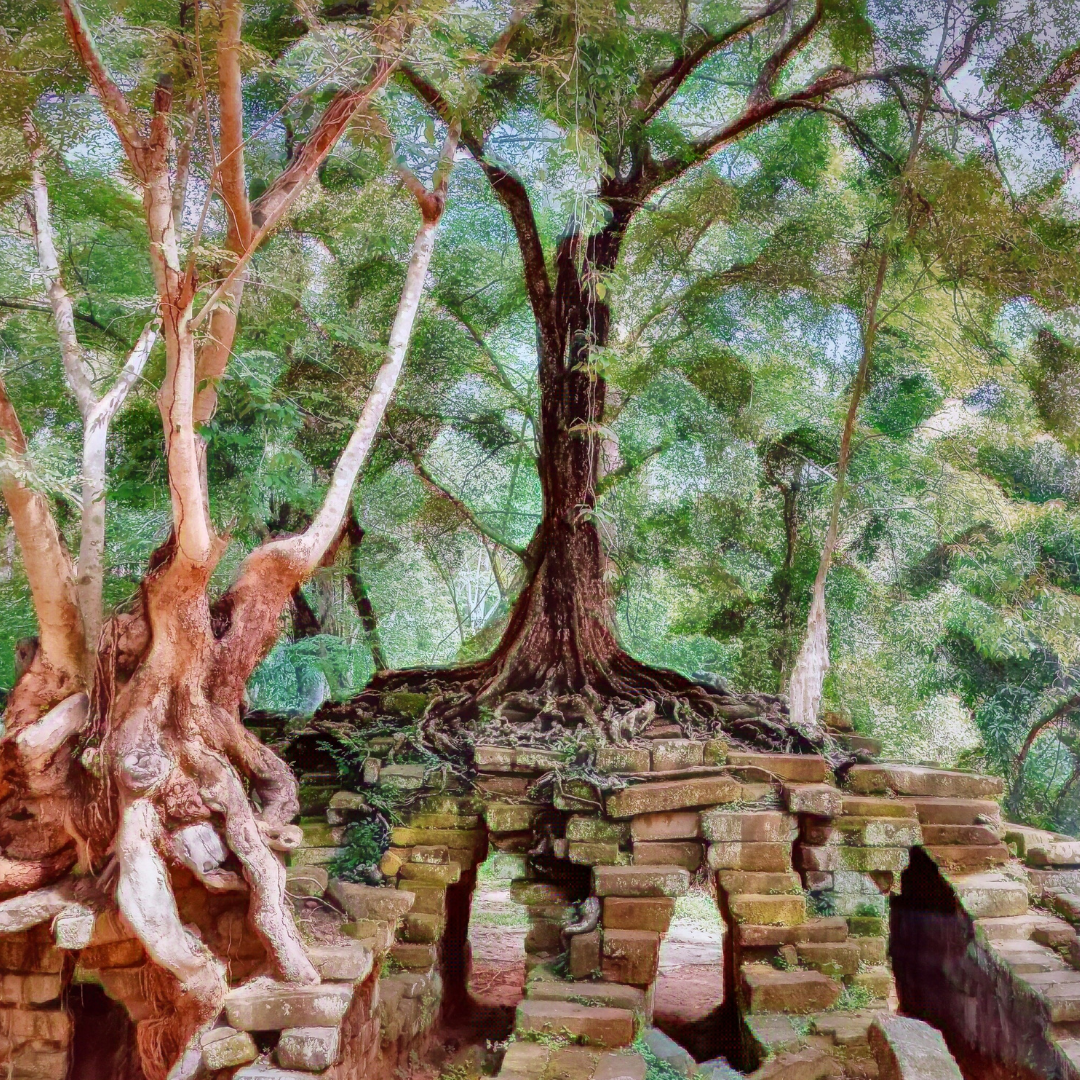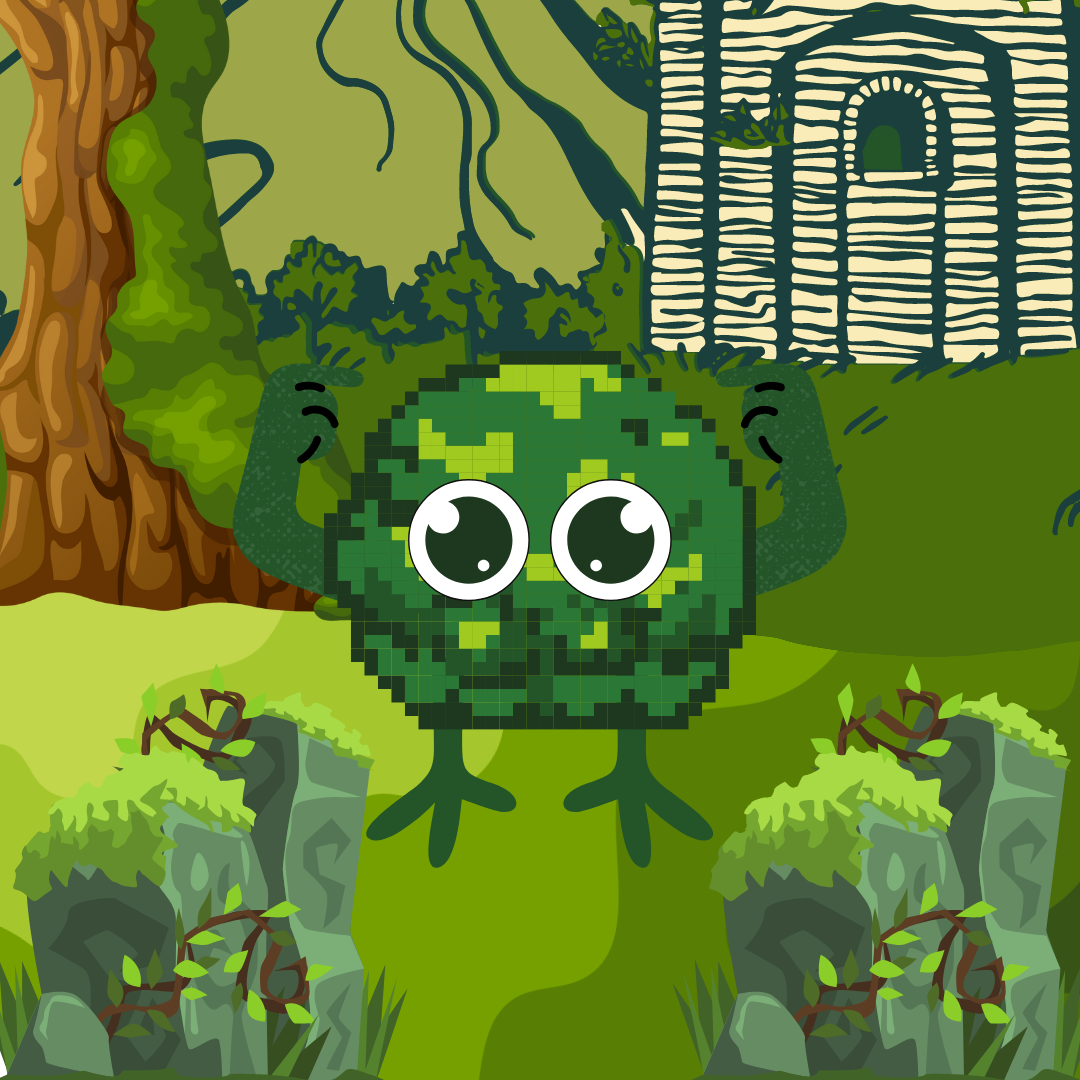Lost City of the DragonSnake
In the eastern portion of the Perennial Woodlands, where rugged karst formations carve into the forest, a young dragonkin was led to a city. Although possible to fly to the Lost City of the DragonSnake, the canopy of trees make it impossible to be seen. Although possible to walk to the Lost City of the DragonSnake, the winding tunnels of caverns make it impossible to navigate. Samkenami, Discoverer of the Lost City asserts it was only through the guidance of the mythical Kirin that he discovered this lost piece of history.
The Lost City
Dragonkin explorers believe that the Lost City was built by their human ancestors who once lived in the Perennial Woodlands. Artifacts found suggest worship of avian and reptilian creatures. Most notably, later artifacts point to the appearance of dragons. The city is spread across underground caverns, rocks which had been formed to create intentional dead ends, a maze of tunnels which lead to various rooms, bedrooms, kitchens, and even tombs. Basin of water and underground rivers flow through the pathways. The most stunning facet of The Lost City, however, is when the sky opens. Among the caverns are several small sinkholes. Many containing underground forests. The grandest of these sinkholes is nearly a mile wide. The limestone walls tower sharply above at nearly four-hundred feet. The grass is thick and soft against one's feet, a river cuts through the forest and large rimstone pools and hot springs are peppered throughout. Untouched for 1000 years, the trees are twisted and tall, bright jade vines hang from its branches, decorating the structures below. The roots burst free from the stone buildings that once housed a civilization. Moths flutter. Frogs croak. The cloying scent of sweet flowers and musty wood hovers in the air. Moss clings across the limestone and stone buildings, as the breeze whispers lost secrets too low to be understood.The City Center
In the center of the city is the Guardian DragonSnake Tree. Too magical to be real and yet too real to be an illusion. The Guardian DragonSnake Tree's canopy stretches above the cavern, its bark is gold and its leaves an indigo purple. The fruit it bears gives prophetic visions. Wrapped around the tree is a serpentine dragon, carved of stone. So wondrous is this tree it is easy to overlook the simple painted frame beneath the dragon's wings. Whatever lays below the DragonSnake Tree must be immense for the Guardian incinerates any person it doesn't deem worthy.Art and Architecture
Within the city center, limestone buildings rise tall, though never nearing the height of the DragonSnake Tree. Their shape resembles the dragonsnake tree fruit before unpeeling the leaves. Like elongated eggs with petals carefully unfurling as if about to blossom. Simple remains of furniture are scattered throughout the rooms with low stone tables and high stone altars. Sculptures carved of serpentine and obsidian, as well as jade (which would keep away the oni). Both simple and intricate alligators, snakes, birds, and lizards. Snakes with feathers. Humans with feathered wings. Dragons. Humans with dragon wings. Even human inspired dragonborn figures. Animal bones were used in steady supply. Daggers, cooking tools, and pottery of bone. Bone carved flutes and drums fashioned from bone and pulled leather. Large hipbones with yet untranslated draconic script, many of them cracked as if set in fire. Chiseled into the cliffside is a precarious staircase. Explorers who dared to climb it entered through a stone dragon's mouth. At the top, one is back on the mainland. Looking down at the vast underground forest, the sunlight much stronger than the flickering rays that filter between the trees. Here, there seems to be the remains of a once grand palace, though without the cavern walls, what's left behind is merely the frame. And most striking of all, giant stone heads carved from gargantuan rocks of limestone. The older, more weathered ones reveal human faces. The last two were the faces of dragons. Although the explorers cannot be sure, they believe these stone heads were the emperors of the city. The dragon heads indicate that in the later years, this lost city was ruled by dragons.Current Inhabitants
Upon discovery of The Lost City, explorers have uncovered two new sapient species. These wee folk seem to have had no contact with outside races.Moss Sprites
First thought to be piles of moss, then some type of strange animal, the moss sprites make their home on the limestone cliffside and abandoned buildings. These sprites have a tiny body formed of moss with stubby arms and legs that they curl inside when resting. They have two large eyes, but no perceptible nose or mouth. Moss Sprites do not speak; instead, communicate telepathically with one another. Their main form of food is stone. Moss Sprites have explained that their mossy skin is porous and allows for both the consumption of stone and the excretion of tiny pebbles. Moss Sprites require resting in rivers, ponds, or rain to maintain vitality.Korpokkur
Although called "wee bear folk" by many dragonkin explorers, these folk refer to themselves as korpokkur. The korpokkur resembles bears, though they stand at between 1 and 1 1/2 feet tall. They do not speak common or any other language known to dragonkin. However, dragonkin with telepathic abilities are able to communicate with them. The two species have slowly been learning each other's languages. The korpokkur live in the green titan mouths and seem to subsist primarily on fish twice their size and plants gathered near the rivers.
by Canva
Stone Tombs
In one section of the cavern network, there are many stone tombs with small stone, obsidian, serpentine, or jade figures resting on top. None of the explorers dare enter these rooms as it's evident the humans were entombed and not cremated. Believing the soul's of the ancient humans to be trapped in their tombs, explorers are searching for a Saio priestess or priest to prefer the necessary ceremony to release their spirits. However, none are willing to take such a dangerous expedition.
by Canva
Flora and Fauna
Swift Cotton Sienna
A small plant found near the base of trees. The leaves surrounding it resemble that of a tiny cabbage. When peeled open, a cottony orange fruit rests inside. Its scent is bright and citrusy. Scholars discovered that eating the cotton sienna temporarily increases one speed.
Irakagu Passion Flower
Named for Samkenami's clan, to give pride to his discoveries. The flower is surrounded by skinny fern elliptical leaves. When in bloom, it showcases a yellow star-shaped corona in the center surrounded by tiny pink tendrils. The scent is cloyingly sweet. The flower can be brewed in a tea that produces a surge of dopamine.
Green Titan's Mouth
A large plant with a bright scarlet spongy center. The plant, with large light green leaves, typically stays in half bloom. The scent is mild and refreshing like mint. The plant grows low to the ground, close to the riverbed, and the bulb is between five and seven feet tall. Korpokkur make their homes in the plant.
Fire Bat
A small, furry orange bat with wings that can glow yellow. The bat emits the glow when attracting moths and other tiny creatures to eat. When threatened, the fire bat sprays a pungent chemical which causes confusion.

by Canva
Type
City
Location under



Comments